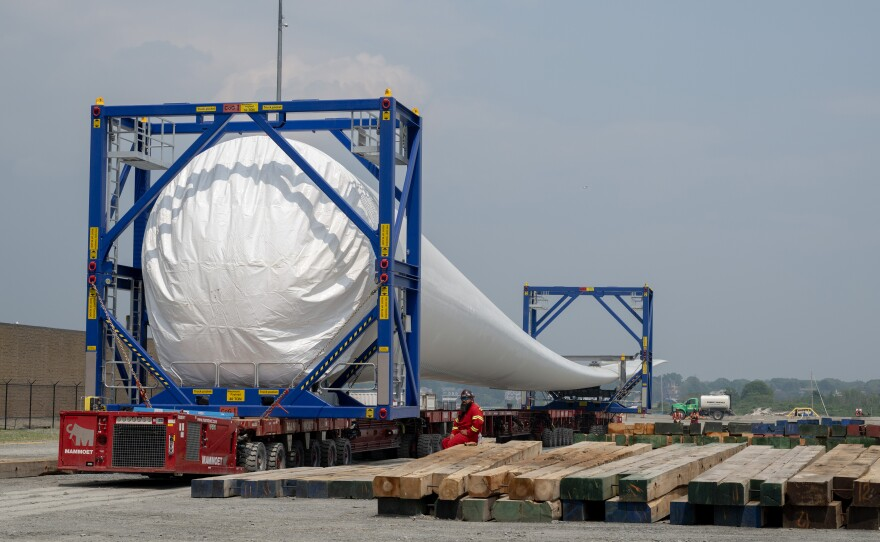To me a main use case is transporting windmill turbine blades. Blade size is currently limited by rail and truck capacity, but with an airship transport you don’t have to fit the blade through tunnels and around corners.
I like the future that this suggests
So you are a bird hater eh? /s
Well my username is a bird, so I’m going to say it’s just a severe case of self-loathing
They go over this in the video, but there are a few major issues with airships, notably wind and the need to maintain neutral bouyancy. Wind is particularly hard to deal with and for bouyancy they would need to pickup an equal amount of weight at the dropoff point (which likely would mean trucking in massive lumps of concrete), eject vast quantities of helium from the airship, or have large tanks in the airship to compress the helium into. None of those are great solutions and building out a better road for last-mile delivery is almost certainly cheaper/easier.
Trucking in ballast would work for the case where roads exist, but aren’t appropriate for a 100+ meter turbine blade. If no roads exist, you’d be stuck filling sandbags on site, pumping in water, or maybe shipping back felled trees or boulders. A hassle but not impossible. Worth it?
Where huge turbine blades will come into their own (if they do) initially is in ocean based turbines. They can be manufactured at a port and go directly to a ship without navigating roads, so they won’t be limited by overpass height and so forth. If the large turbines are that much of an advantage, it should become apparent as sea installations evolve.
If there is any way to match up new blades coming in with shipments of old blades or worn out components going back, that would be ideal.
But also large bags of sea water would do the trick.
The craft in the news today mixes aero lift with helium lift, and claim that it “can stay in place on the ground as it is loaded, unloaded or refueled”
https://www.theregister.com/2024/03/27/airlander_10_hybrid_airship/
Admittedly their main customer wasn’t unloading anything at remote locations (it was carrying surveillance equipment) so we don’t know if it can fully unload all 10 tonnes in that mode - but that was the claim.
Me investing in Goodyear:

People think mainly of the Hindenberg when you mention airships, but there were a lot of other ones that met tragic ends. The US Navy’s Akron and Macon both crashed due to storms, the former with the loss of all but three sailors.
I think the troposphere is just too turbulent for big fragile bubbles like this to work. Maybe if we had blimps like Neil Stephenson’s The Diamond Age - where they are made of diamond and use vacuum for lift - they could be strong and small enough to work. But the idea of using something like this to deploy wind turbines is just asking for trouble.
Yep, the structure integrity is maybe a hardest issue here.
I recently finished reading His Majesty’s Airship, which focuses specifically on the R101 development and disaster, but also more broadly on the entire history of rigid airships through the 1930s. The recurring theme is that people want airships to work so they keep trying. A new design comes along that promises to fix the problems from before and it’s fine for a while, until there’s a problem like, say, a strong breeze, and dozens of people die in a horrible crash. I want airships to make a comeback. The basic idea of something that floats and you merely need to push around with some propellers sounds great. I’m not terribly optimistic about it though. The weather is a real problem. Planes and ships and trains and trucks can all function even in an outright storm; airships inevitably require fair weather. Worse still, if they’re outside a hangar when the weather starts getting bad, they’re stuck. They can’t get into a hangar before it gets worse because the very act of getting in a hangar for protection requires extremely precise control with no chance of sudden gusts that could shove it into the ground or the sides of the hangar. Extra propellers to maneuver can do only so much; they’re not magic. Major advances in weather forecasting in recent years maybe mean there are more situations where an airship could be safely used, with greater confidence of agreeable weather for the duration of the trip, but you’re certainly not going to build a freight business model on “sorry, let’s try again next week."
Yep, the problem is probably worse for big ones and the video implies that we need extra large airships to carry heavy weights.
Unpredictable drift in a sky thats dense with jet propled air travel sounds like a deathwish. You’d have to keep these things far away from airports and have their own launching space.
Idk, should they?
Betteridge’s Law says the answer to an article title with a question is always “no”.
I heard about this law several times, but I always forget whether it is ‘yes’ or ‘no’ 😂
Click the link and watch? It’s very good. Looks like Veritasium spent a huge amount of time researching for this video and you’re not just trusting his research - he interviews experts on historical (failed) air ships as well as modern engineers working on multi-billion dollar projects trying to fix the mistakes that were made in the past as well as discussing new problems that weren’t encountered last time but would have if they hadn’t given up almost immediately.
Still - it finishes on a positive note, those engineers do think the problems can be solved. We could have cheap cargo transport to anywhere in the world instead of exclusively to coastal cities with a sheltered bay and a harbour that takes hundreds of years to build. An air ship could deliver a shipping container, cheaply, to anywhere a helicopter can land. That’s a problem worth trying to solve.
It will likely start with niche use cases, such as delivering massive wind turbine blades to the top of a mountain ridge… without having to first build a mountain road up to the construction site - and a road suitable for trucks that can carry an 800 foot long turbine blade:

Once air ships are solved for those use cases, it will inevitably be used for other things too.
Yes.
My main issue with anything that flies and doesn’t have wings is that, if anything bad happens, it’s straight to the ground and everyone (probably) dies. Planes can at least glide if there’s an engine failure.
That said, we still have helicopters and hot air balloons, so I don’t see why we shouldn’t have dirigibles as well.
Helicopter can also go into autorotation mode, i.e., to “gently” land even with engine failure. I think airships has no moving parts, what’s safe, and with the gas leak, I think it is rather slow process, so it would be easy to gently land.
Yep, airships aren’t overpressurized like a balloon - any leak will be extremely slow, as the heavier ambient air gradually displaces the helium inside the airship through whatever hole might be created. As I understand it, one of the big maintenance issues they have is even finding the holes from normal wear and tear. The usual failure scenarios involve storms with huge pressure changes.
Helium could be detected with some specialized detectors, but I suppose approximately – so, as you said, finding exact leak place is challenging.
If it was even slightly heated couldn’t you maybe visualize it with thermal imaging?
I suppose so, if some heater would be placed to heat the helium.
Sure unless the thing that goes wrong is the wing.
Found Cid from the next Final Fantasy.
Haven’t watched it yet, but yes, absolutely.
Here is an alternative Piped link(s):
https://piped.video/watch?v=ZjBgEkbnX2I
Piped is a privacy-respecting open-source alternative frontend to YouTube.
I’m open-source; check me out at GitHub.
We need them for my town’s SteamPunk Festival! Nice bit of retro-futuristic technology that is so cool, but utterly impractical












